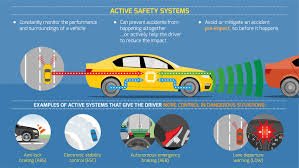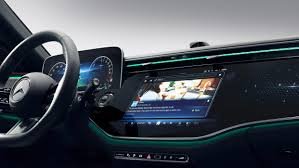
Safety remains a paramount concern in the automotive industry, driving continuous innovation in technology aimed at preventing accidents and protecting occupants. From advanced driver-assistance systems (ADAS) to passive safety features, modern automobiles are equipped with a range of technologies designed to enhance safety on the road. This article explores key safety innovations through a series of questions and answers.
Q1: What are some of the primary safety challenges that modern automobiles address?
A: Modern automobiles address challenges such as reducing the likelihood and severity of accidents, protecting occupants in the event of a collision, and enhancing overall road safety. Innovations focus on mitigating human error, the leading cause of accidents, through advanced technologies and improved vehicle design.
Q2: How do advanced driver-assistance systems (ADAS) contribute to vehicle safety?
A: ADAS utilize sensors, cameras, and radar to monitor the vehicle’s surroundings and assist the driver in various ways. Features like adaptive cruise control, lane-keeping assistance, automatic emergency braking (AEB), and blind-spot monitoring help prevent collisions, maintain safe distances, and improve overall situational awareness on the road.

Q3: What role does vehicle structure and materials play in enhancing safety?
A: Vehicle manufacturers employ advanced materials and engineering techniques to enhance crashworthiness and occupant protection. High-strength steel, aluminum alloys, and composite materials are used strategically to optimize the vehicle’s structure, reducing weight while improving impact resistance and energy absorption during a crash.
Q4: How are passive safety features improving occupant protection?
A: Passive safety features, such as airbags, seat belts, and advanced restraint systems, are designed to protect occupants during a collision. Multi-stage airbags deploy based on crash severity to reduce injury risk, while seat belts equipped with pretensioners and load limiters optimize restraint effectiveness. Crash-responsive headrests and energy-absorbing materials further enhance passenger safety.

Q5: What advancements are being made in pedestrian and cyclist safety?
A: Automakers are increasingly focusing on pedestrian and cyclist safety by integrating technologies such as pedestrian detection systems and automatic braking. These systems use sensors and cameras to detect vulnerable road users and apply brakes autonomously if a collision is imminent, reducing the severity of injuries and fatalities.

Table: Key Safety Innovations in Modern Automobiles
| Safety Feature | Description |
|---|---|
| Adaptive Cruise Control | Automatically adjusts vehicle speed to maintain a safe following distance |
| Lane-Keeping Assistance | Alerts driver and assists in steering to stay within lane boundaries |
| Automatic Emergency Braking (AEB) | Applies brakes autonomously to prevent or mitigate collisions |
| Multi-Stage Airbags | Deploy based on crash severity to reduce injury risk |
| Pedestrian Detection Systems | Detects pedestrians and applies brakes if necessary |

Safety innovations in modern automobiles represent a convergence of advanced technology, engineering expertise, and a commitment to improving road safety for all road users. As these technologies continue to evolve, they play a crucial role in reducing accidents, protecting occupants, and creating safer driving environments globally.